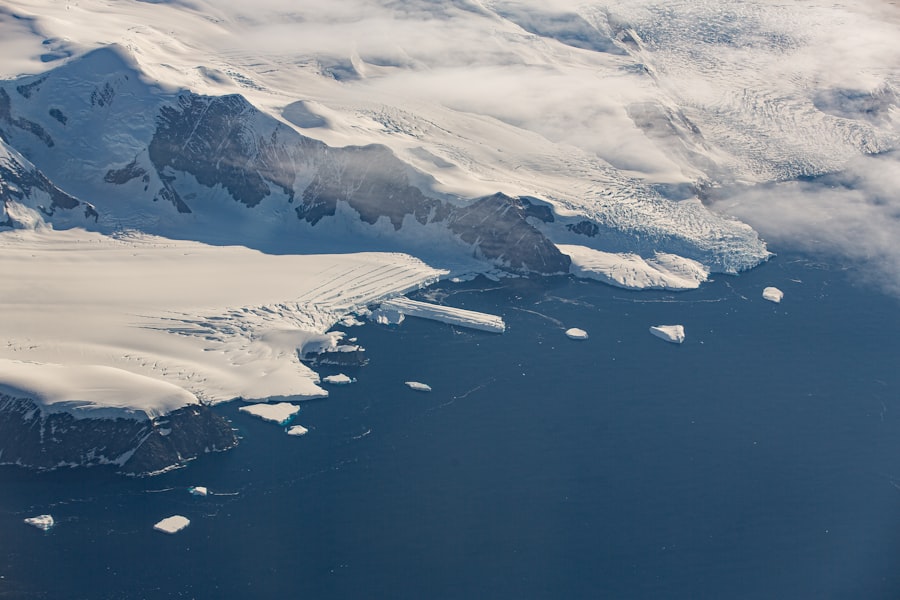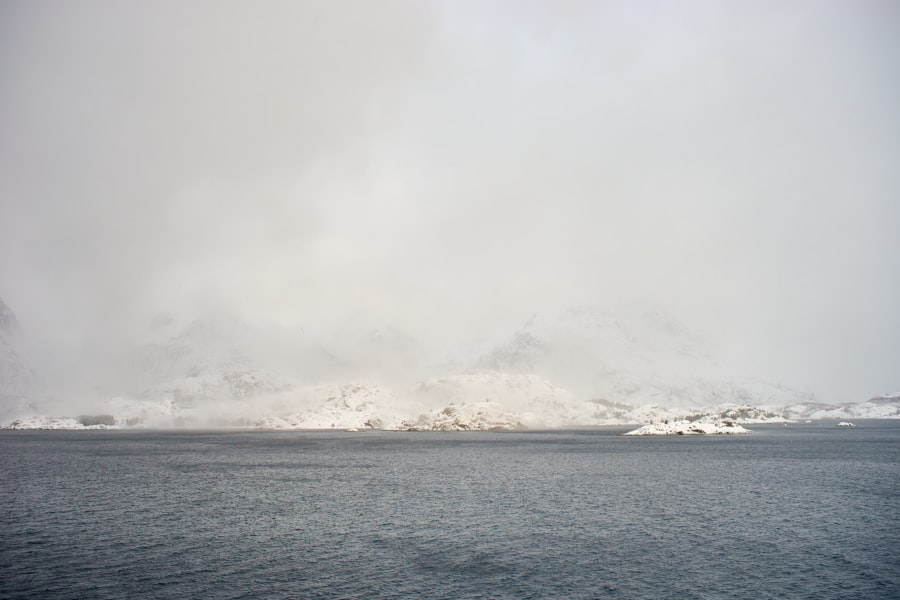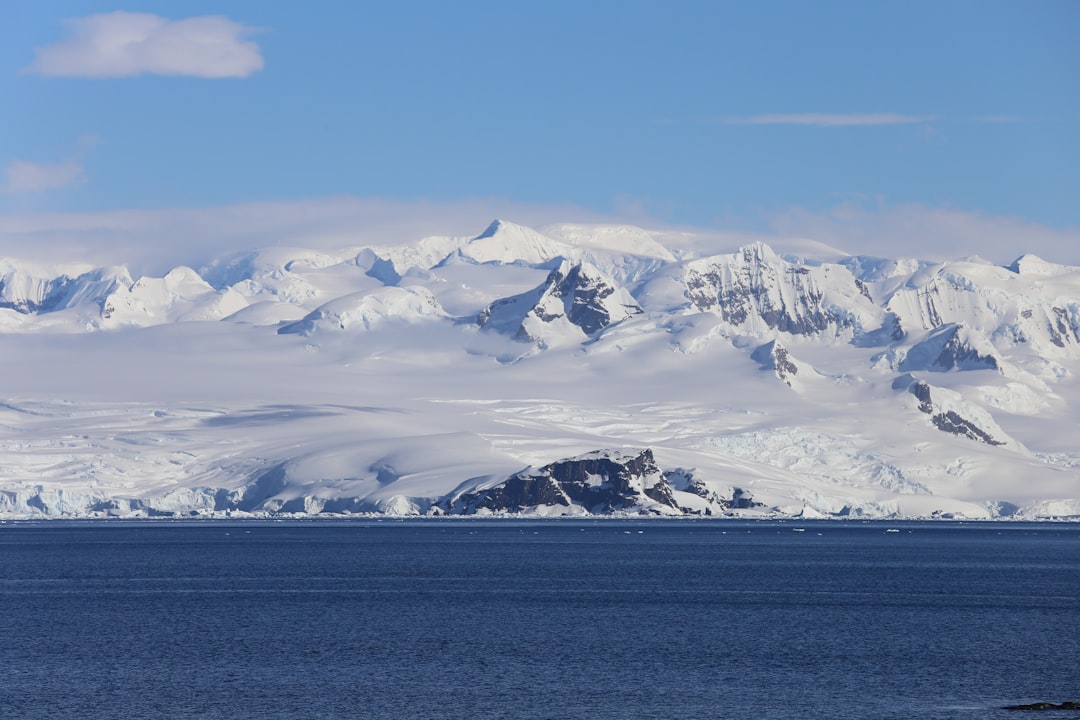The Drake Passage, a body of water situated between the southern tip of South America and Antarctica, serves as a critical gateway for adventurers and researchers alike. Spanning approximately 600 kilometers, this passage is renowned for its tumultuous waters and unpredictable weather patterns. It is not merely a geographical feature; it represents a significant ecological zone where the Atlantic and Pacific Oceans converge, creating a unique marine environment.
The passage is named after Sir Francis Drake, the English sea captain who navigated these waters in the late 16th century, and it has since become synonymous with both peril and beauty. Navigating the Drake Passage is often considered a rite of passage for those seeking to explore the Antarctic region. The waters are known for their strong currents and high waves, which can pose challenges for even the most seasoned mariners.
However, the passage also offers breathtaking views of the surrounding landscapes, including icebergs and distant mountain ranges. For many travelers, crossing the Drake Passage is not just about reaching Antarctica; it is an integral part of the adventure that shapes their experience and understanding of this remote part of the world.
Key Takeaways
- The Drake Passage is the gateway to Antarctica, known for its unpredictable and rough waters.
- The best time to cross the Drake Passage is during the Antarctic summer, from November to March, to avoid extreme weather conditions.
- Navigational options for crossing the Drake Passage include the traditional route and the more sheltered Beagle Channel route.
- Essential gear and supplies for crossing the Drake Passage include warm clothing, waterproof gear, and seasickness medication.
- Tips for dealing with rough waters include staying hydrated, getting plenty of rest, and following the crew’s instructions for safety.
Choosing the Right Time to Cross: Weather and Seasonal Considerations
Timing is crucial when planning a crossing of the Drake Passage. The weather can vary dramatically throughout the year, influencing not only the safety of the journey but also the overall experience. The austral summer, which runs from late October to early March, is generally considered the best time to make the crossing.
During these months, temperatures are milder, and the likelihood of encountering severe storms diminishes significantly. Travelers can expect longer daylight hours, which enhances visibility and allows for more opportunities to observe wildlife. However, even during the summer months, conditions in the Drake Passage can be unpredictable.
Sudden storms can arise, leading to rough seas that challenge even experienced sailors. Therefore, it is essential for travelers to remain flexible with their plans and to stay informed about weather forecasts. Understanding seasonal patterns can help in making informed decisions about when to embark on this journey.
Those who are well-prepared for varying conditions will find that their experience in the Drake Passage is not only manageable but also immensely rewarding.
Selecting the Best Route: Navigational Options for Crossing the Drake Passage

When it comes to crossing the Drake Passage, navigational options can vary based on several factors, including vessel type, weather conditions, and individual preferences. Most expeditions utilize established routes that take advantage of prevailing winds and currents to ensure a smoother crossing. The most common route is a direct path from Ushuaia, Argentina, to King George Island in Antarctica.
This route is favored for its relative efficiency and accessibility. However, some travelers may opt for alternative routes that allow for additional sightseeing opportunities. For instance, certain expeditions may choose to navigate through the Beagle Channel before entering the open waters of the Drake Passage.
This route offers stunning views of coastal landscapes and wildlife before heading into more challenging waters. Regardless of the chosen path, it is essential for captains to remain vigilant and adaptable, as conditions can change rapidly in this dynamic marine environment.
Preparing for the Journey: Essential Gear and Supplies
| Essential Gear and Supplies | Quantity | Weight | Cost |
|---|---|---|---|
| Hiking Boots | 1 pair | 2.5 lbs | 120 |
| Backpack | 1 | 3 lbs | 80 |
| Tent | 1 | 5 lbs | 200 |
| Sleeping Bag | 1 | 2.5 lbs | 100 |
| Water Filter | 1 | 0.5 lbs | 40 |
Preparation is key when embarking on a journey across the Drake Passage. Travelers should equip themselves with essential gear that will ensure comfort and safety during their crossing. Layered clothing is highly recommended due to the fluctuating temperatures and potential for wind and rain.
Waterproof jackets, thermal layers, and sturdy footwear are crucial components of any packing list. Additionally, travelers should consider bringing accessories such as gloves, hats, and sunglasses to protect against harsh weather conditions.
This may include medications for seasickness, sunscreen for sun protection during long hours on deck, and binoculars for wildlife watching. A well-stocked camera or journal can also enhance the experience by allowing travelers to document their journey. By preparing adequately with both clothing and personal items, travelers can ensure that they are ready to face whatever challenges may arise during their crossing of the Drake Passage.
Staying Safe at Sea: Tips for Dealing with Rough Waters
Crossing the Drake Passage can be an exhilarating experience, but it also comes with its share of challenges, particularly when it comes to rough waters. Safety should always be a top priority for travelers navigating these unpredictable seas. One of the most effective strategies for dealing with rough waters is to stay informed about current conditions and forecasts.
Captains and crew members are trained to monitor weather patterns closely and will provide guidance on how best to navigate challenging situations. In addition to staying informed, travelers should familiarize themselves with safety protocols on board their vessel. This includes knowing where life jackets are located and understanding emergency procedures in case of severe weather or other unexpected events.
It is also advisable for travelers to remain in designated areas during rough seas to minimize the risk of injury. By following safety guidelines and remaining aware of their surroundings, travelers can enjoy their journey while minimizing potential hazards associated with crossing the Drake Passage.
Wildlife Watching: What to Look for During the Crossing

One of the most captivating aspects of crossing the Drake Passage is the opportunity for wildlife watching. This region is home to a diverse array of marine life that travelers may encounter during their journey. From seabirds soaring overhead to whales breaching in the distance, there is no shortage of fascinating creatures to observe.
Common sightings include albatrosses, petrels, and various species of seals that inhabit these waters. As travelers approach Antarctica, they may also have the chance to spot larger marine mammals such as humpback whales or orcas. These majestic creatures often migrate through the Drake Passage during certain times of the year, providing an unforgettable experience for those lucky enough to witness them in their natural habitat.
Travelers are encouraged to keep their cameras ready and remain patient while observing wildlife, as these moments can be fleeting yet incredibly rewarding.
Navigating the Drake Passage: A Captain’s Perspective
From a captain’s perspective, navigating the Drake Passage requires a combination of skill, experience, and intuition. The passage presents unique challenges due to its unpredictable weather patterns and strong currents. Captains must be adept at reading environmental cues and making quick decisions based on changing conditions.
This often involves adjusting course or speed to ensure a safe passage while still providing passengers with an enjoyable experience. Moreover, captains play a crucial role in educating passengers about the significance of this unique marine environment. They often share insights about local wildlife, historical landmarks, and ecological considerations that enhance travelers’ understanding of their surroundings.
By fostering a sense of connection between passengers and the natural world, captains help create a memorable journey across one of Earth’s most remarkable waterways.
Coping with Seasickness: Strategies for a Smooth Passage
Seasickness can be a common concern for travelers embarking on a journey across the Drake Passage. The combination of rolling waves and unpredictable weather can lead to discomfort for even seasoned sailors. To mitigate these effects, there are several strategies that travelers can employ before and during their crossing.
One effective approach is to choose accommodations wisely; cabins located in the middle of the vessel tend to experience less motion than those at either end. Additionally, travelers may benefit from over-the-counter medications designed to prevent seasickness or natural remedies such as ginger or acupressure bands. Staying hydrated and consuming light meals can also help alleviate symptoms associated with motion sickness.
Engaging in activities on deck or focusing on fixed points on the horizon can provide distraction from feelings of nausea. By being proactive about managing seasickness, travelers can enhance their overall experience while crossing this iconic passage.
Making the Most of the Journey: Activities and Entertainment on Board
While crossing the Drake Passage may involve periods of rough seas or inclement weather, there are numerous activities available on board that can enhance travelers’ experiences during this time. Many vessels offer educational lectures led by naturalists or scientists who share insights about Antarctic ecosystems, wildlife behavior, and historical expeditions in the region. These presentations provide valuable context for what travelers will encounter upon arrival in Antarctica.
In addition to educational opportunities, many vessels feature amenities such as lounges or observation decks where passengers can relax and socialize with fellow travelers. Some expeditions may even offer guided excursions or workshops focused on photography or art inspired by the stunning landscapes encountered during the journey. By participating in these activities, travelers can make meaningful connections with both their fellow adventurers and the breathtaking environment surrounding them.
Documenting the Passage: Tips for Capturing the Experience
Capturing memories during a journey across the Drake Passage is an essential part of many travelers’ experiences. With stunning landscapes and unique wildlife encounters at every turn, documenting these moments can create lasting memories that extend beyond photographs alone. Travelers are encouraged to bring high-quality cameras or smartphones equipped with good lenses for capturing both wide-angle shots of dramatic seascapes and close-ups of wildlife.
In addition to photography, keeping a travel journal can be an enriching way to reflect on experiences throughout the journey. Writing down thoughts about encounters with nature or personal reflections on crossing such a significant body of water adds depth to memories that photographs alone may not convey. By combining visual documentation with written reflections, travelers can create a comprehensive record of their adventure across one of Earth’s most iconic passages.
Arriving at the Antarctic Peninsula: What to Expect After Crossing the Drake Passage
Upon successfully crossing the Drake Passage, travelers are greeted by breathtaking views as they approach the Antarctic Peninsula—a land characterized by towering glaciers, rugged mountains, and pristine ice formations. The transition from open ocean to this icy wonderland marks a significant moment in any expeditioner’s journey. As they disembark from their vessel onto solid ground for the first time in Antarctica, travelers often feel a profound sense of awe at being in one of Earth’s last great wildernesses.
The Antarctic Peninsula offers myriad opportunities for exploration—ranging from guided hikes on glaciers to kayaking among icebergs or observing penguin colonies in their natural habitat. Each experience provides insight into this fragile ecosystem while fostering appreciation for its beauty and importance in global climate dynamics. As travelers embark on excursions into this remote landscape after crossing the Drake Passage, they carry with them not only memories but also newfound knowledge about one of our planet’s most extraordinary regions.
The Drake Passage, a notorious stretch of water between the southern tip of South America and the Antarctic Peninsula, is often highlighted for its challenging conditions and rich biodiversity. An interesting article that delves into the geographical and ecological significance of this region can be found on MyGeoQuest. This article provides insights into the unique marine life and the dynamic weather patterns that characterize the Drake Passage. For more detailed information, you can explore the article by visiting MyGeoQuest.
WATCH NOW! Drake Passage: Earth’s Deadliest Waters Revealed
FAQs
What is the Drake Passage?
The Drake Passage is the body of water between the southern tip of South America and the northern tip of the Antarctic Peninsula. It is known for its rough seas and strong winds, making it one of the most challenging maritime routes in the world.
What is the Antarctic Peninsula?
The Antarctic Peninsula is the northernmost part of the continent of Antarctica. It extends towards South America and is known for its stunning landscapes, diverse wildlife, and scientific research stations.
Why is the Drake Passage important for Antarctic exploration?
The Drake Passage is the main route for ships traveling to and from Antarctica. It provides access to the Antarctic Peninsula and the surrounding areas for scientific research, tourism, and resupplying research stations.
What is the weather like in the Drake Passage and Antarctic Peninsula?
The weather in the Drake Passage and Antarctic Peninsula can be extremely harsh, with strong winds, rough seas, and rapidly changing conditions. The area is known for its cold temperatures, icebergs, and challenging sailing conditions.
What wildlife can be found in the Drake Passage and Antarctic Peninsula?
The area is home to a wide variety of wildlife, including penguins, seals, whales, and seabirds. The waters around the Antarctic Peninsula are rich in marine life, making it a popular destination for wildlife enthusiasts and researchers.
What are some popular activities in the Drake Passage and Antarctic Peninsula?
Popular activities in the area include wildlife watching, visiting research stations, exploring glaciers and icebergs, and learning about the history of Antarctic exploration. Adventure activities such as kayaking, hiking, and camping are also popular for those visiting the region.
